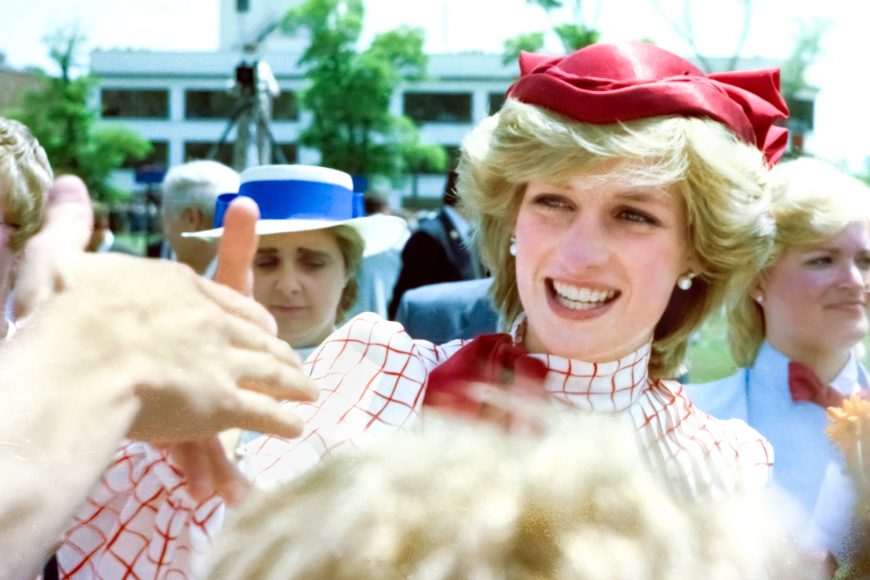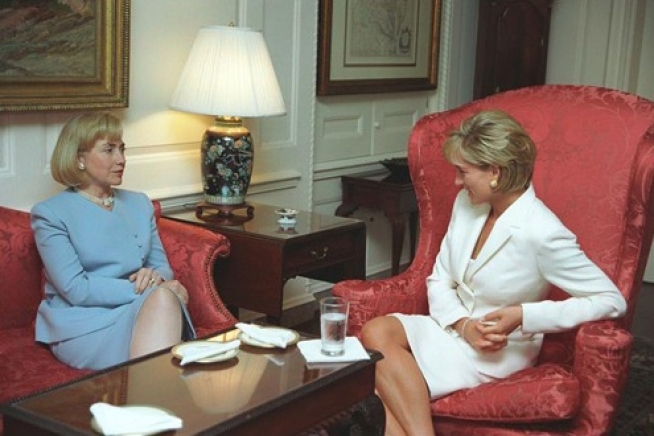With the return of “The Crown,” Netflix’s addictive-as-potato-chips saga of the British royal family, we enter the tumultuous years of the late Diana, Princess of Wales, who is having another moment. But then, when is she not?
Since her tragic death in a car accident in a Paris tunnel on Aug. 31, 1997, at just 36, Princess Diana has become even more of an icon, the subject of countless books, magazines, theater productions and movies. Kristen Stewart of “Twilight” fame will play her in the upcoming film “Spencer,” which considers “the People’s Princess” through the narrow lens of a tense Christmas holiday at Sandringham at the end of her marriage to Prince Charles. It’s being helmed by Pablo Larraín, who turned Natalie Portman into Jacqueline Kennedy for his “Jackie.”
Meanwhile, “Diana: A New Musical” will be presented on Netflix next year and bow on Broadway May 25, five weeks before what would’ve been her 60th birthday, July 1. (For that occasion, a statue of the princess will be installed at Kensington Palace, her former home as a member of the royal family.)
An icon has to have a recognizable visual style, but as The New York Times’ fashion director and chief fashion critic Vanessa Friedman notes, Diana was unusual in that her iconic status was not based on that:
“Diana wasn’t one of those public figures with an identifiable and consistent personal style, though she clearly loved to get dressed.
“Rather, the greatest trend she ever set — bigger than the fad for engagement rings with oval sapphires surrounded by diamonds, or the biggest of her big shoulders — was as the original fashion reality TV star: a public figure who used her clothes as a personal weather vane, not to advance the agenda of state but for direct communication to the outside world, even when she was simply smiling and standing by. She wore her emotions not just on, but as, her sleeves. And because we could all see them, we could all relate.”
Taken as a whole, however, the clothes’ increasingly sleek, elegant trajectory tell the story of a woman’s transformation from sacrificial virgin, overwhelmed in that hideous meringue of a wedding dress, to a confident woman in full, bloodied but unbowed. Consider that off-the-rack, off-the-shoulder, asymmetrical little black dress she wore to an opening at the Serpentine Gallery the night her husband revealed his adultery on the BBC. It’s become known as the “Drop Dead” dress. And it is drop dead gorgeous still, forever accented by a pearl choker with a sapphire brooch so blue as to look black. Drop dead indeed.
On June 25, 1997, Diana would divest herself of much of her wardrobe for charity in a Christie’s auction. Often in life we do things whose import is revealed only later. Diana was coming into her own at last, stripping away the past, yes, but she was also preparing to leave us. The moment that you achieve your full potential is the moment you are ready to shuffle off the Shakespearean mortal coil. She just didn’t know it. Nine weeks later, she would be dead.
Then she sped away from us like Jackie, another goddess in another doomed black car – albeit a cool, self-possessed brunette to Diana’s warm, vulnerable blonde – only to return again and again. If the clothes and looks continue to fascinate it’s because Diana fascinated. We just can’t seem to get a handle on her.
And if we cherish many of the looks and the clothes, it’s because we love her still – and no doubt always will.


